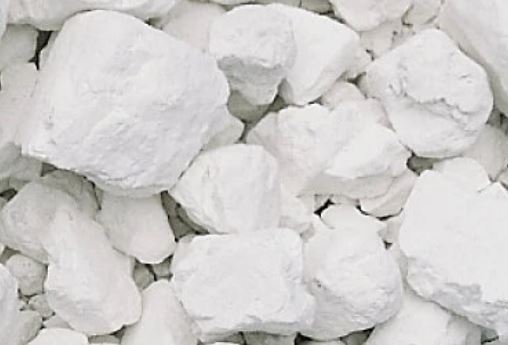Quicklime
Limestone was quarried by Arkansas Lime Company in Independence County from an open pit mine at Limedale for the production of quicklime. The company started in 1906, incorporated in 1910, and later became a subsidiary of United States Lime and Materials of Dallas, Texas. The deposit was unique for the Boone Formation (Mississippian) in that it was devoid of chert. Drilling and blasting released the stone from the outcrop and provided first-order breakage. The rubble was then railed to a nearby crushing facility where the stone was further crushed, screen-sorted into size classes, and stored. Limestone needed for high-purity applications (quicklime and food supplements) was usually hand-sorted at the mine. In the manufacture of quicklime, the limestone was crushed to lump size (usually 5-8 inches) and heated in a kiln to temperatures of around 2,000° F. The calcination process drives off carbon dioxide from the calcite, forming calcium oxide (quicklime). Additionally, limestone, also used as a source of nutritional calcium, was ground into a powder, mixed with other supplements and binders, and reformed into pills or capsules.

The deposit was mined out and the operation closed after nearly 90 years of continuous production in the mid-1990s after an extensive local exploration program failed to find another chert-free deposit.